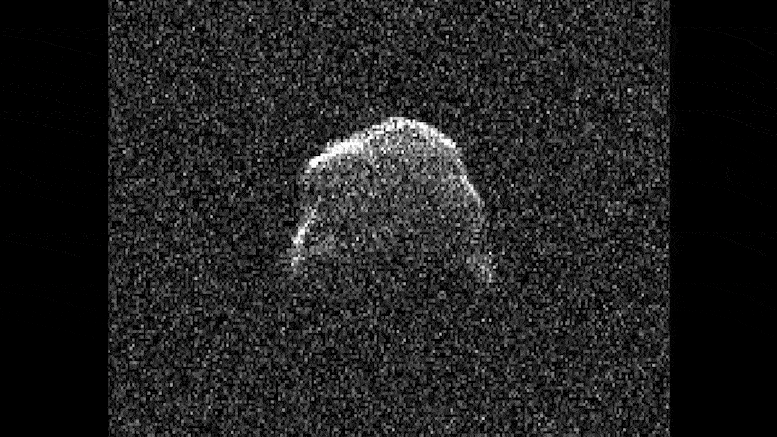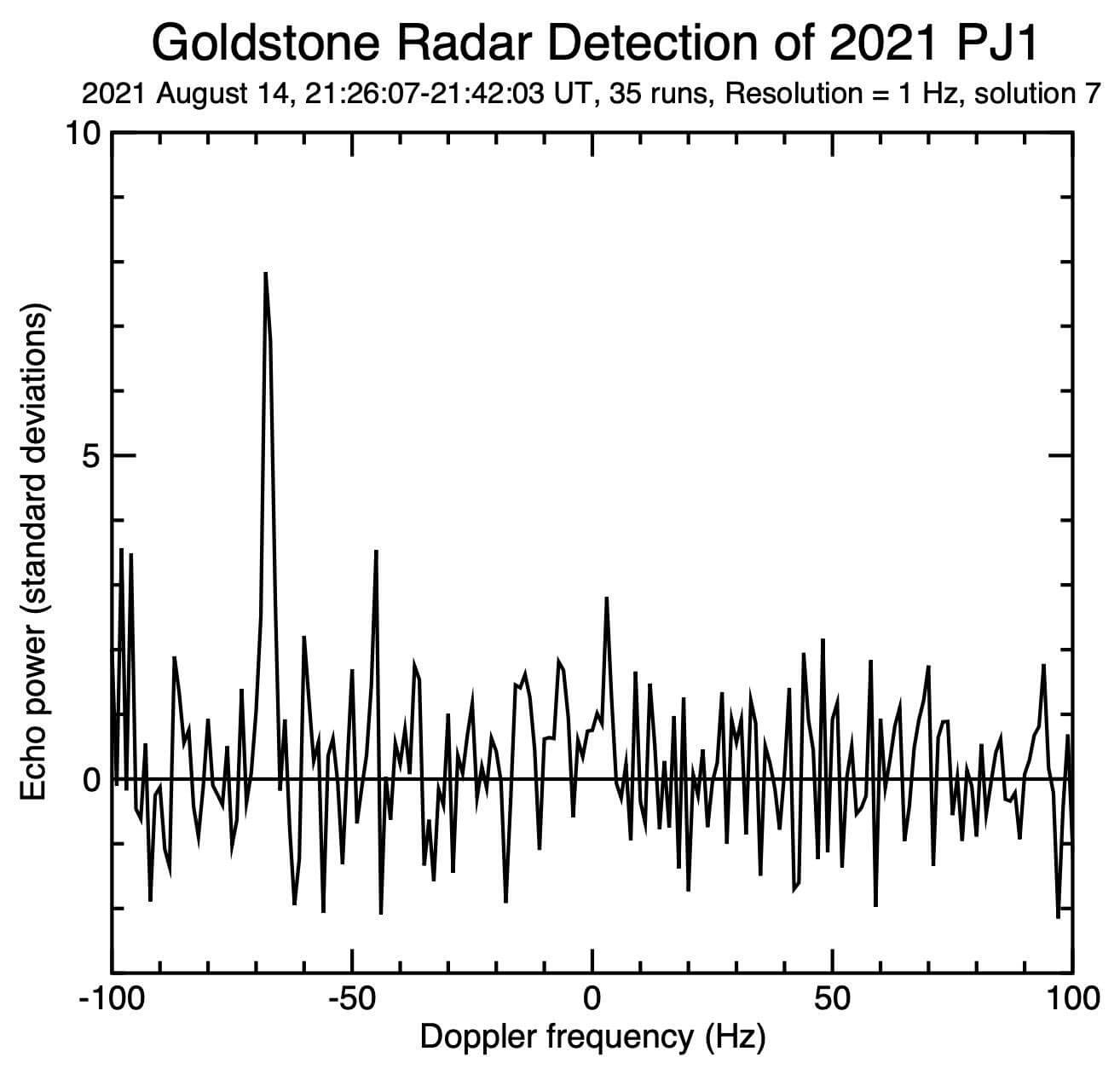Just seven days later, a planetary radar observed the 1,001st bone of its kind, which was much larger.

Seven days after this historic milestone, a large antenna on NASA's Goldstone Deep Space Network imaged another, much larger object.
On August 14, 2021, a near-Earth asteroid (NEA) designated 2021 PJ1 passed the Earth at a distance of more than 1.7 million km. This new asteroid that was between 20 and 30 meters wide was not a threat to Earth. But its arrival was historic, marking the XNUMXth NEA observed by a planetary radar in just over fifty years.
And just seven days later, a planetary radar observed the 1,001st bone of its kind, which was much larger.
Since the first radar observation of asteroid 1566 Icarus in 1968, this powerful technique has been used to observe NEAs and passing comets (collectively called near-Earth objects, or NEOs). These discoveries using radar improve our knowledge of NEO's orbits, and provide data that can extend the calculations of the future movement by decades to hundreds of years and help predict definitively whether an asteroid is going to hit Israel, or whether it will just pass nearby. For example, recent radar measurements of the potentially dangerous asteroid Apophis have helped eliminate any likelihood that it will collide with Earth in the next hundred years.

This figure shows the radar echo from asteroid 2021 PJ1 on August 14, 2021. The horizontal axis shows the difference in the predicted Doppler frequency and the new radar measurement.
In addition, they can provide scientists with detailed information about physical properties that can only be matched by sending a spacecraft and observing these objects up close. Depending on the size and distance of the asteroid, it is possible to use the radar to image its surface in intricate detail and also to determine its size, shape and rate of rotation and whether it has any small moons accompanying it.
In the case of 2021 PJ1, the asteroid was too small and the viewing time too short to obtain images. But as the XNUMXth NEA discovered by a planetary radar, the milestone highlights the activity to study asteroids that have passed close to Earth.
"2021 PJ1 is a small asteroid, so when it passed us at a distance of more than 1.7 million km we couldn't get detailed radar images," said Lance Benner, who directs NASA's Radar Asteroid Research Program at the Jet Propulsion Laboratory. of NASA in Southern California. "But even at this distance, the planetary radar is powerful enough to detect it and measure its speed with great precision, and this has significantly improved our knowledge of its future motion."
Benner and his team conducted this activity using the 70-meter-wide antenna of Deep Space Station 14 at the Deep Space Network's Goldstone Deep Space Complex near Barstow, California, to transmit radio waves to the asteroid and pick up the radar's returns, or "echoes."
"In addition to surveys that use optical telescopes on the ground and in space to discover and track nearly 27,000 NEOs throughout our solar system, the planetary radar is an important means of tracking asteroids approaching Earth," said Kelly Fast, director of the office's NEO observation program. to coordinate planetary defense at NASA headquarters in Washington. "Achieving this milestone - now a little over a thousand NEA detections using radar - highlights the important contribution made in characterizing this dangerous population, a fundamental matter in our planetary defense activities."
More of the topic in Hayadan:
- Google and NASA are jointly developing an interplanetary Internet
- Initial tests of the comet dust began in Houston. Operation Stardust is crowned with success
- Radar - an invention without an inventor
- Venus - through the clouds
- What did Asimov foresee in 1964 that would be established in the Negev in 2014?

One response
Spelling problems lol